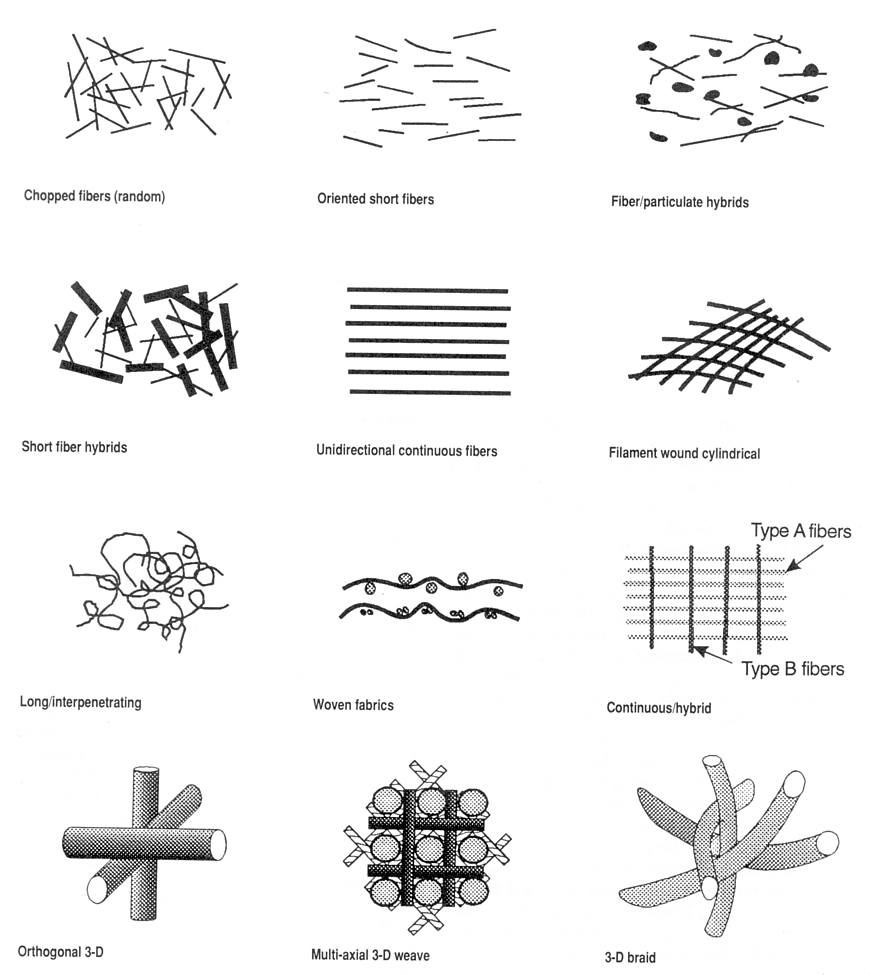
Fiber composites can difference in the fiber content, type, length, orientation and hybridization. Randomly oriented chopped fiber based materials are generally at the lower property end. Continuous unidirectionaly fiber composites are the "high performance" materials. Short fibers are generally used for components that carry light loads or secondary structural applications. Continuous fibers are used in primary structural applications. Maximum properties can be achieved if all fibers are aligned in the fiber axis direction. Orthoscopic properties can be obtained by using alternating layers between 0o and 90o. Laminates can be made which are stacks of thin layers of fibers and matrix material. Generally, the fiber axis are in different directions for each layer of fibers used which helps in producing orthoscopic properties. Some of the new trends are to make 3-D weaves and braids are some of the newer techniques being used in the formation of fiber based composites.
Composites reinforced primarily with discontinuous fibers have lower
mechanical properties than those with continuous fibers. This is
because all of the loads in discontinuous fiber composites must be carried
by the matrix in shear from fiber length to fiber length. Also, the
volume of fiber in these materials is generally lower than in typical continuous
fiber composites.
Ref.
Jang, B. Z. Advanced Polymer Composites: Principles and Applications;
ASM International: Materials Park, 1994.